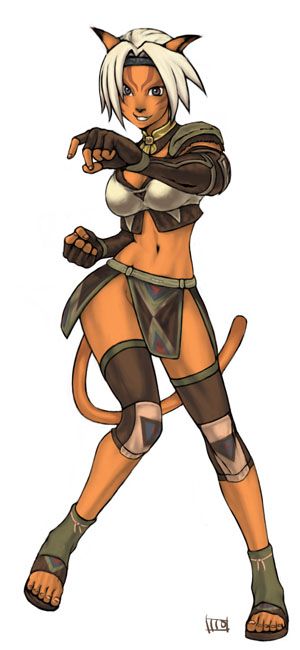OK...this is a science question at its heart, but it's also my time to be completely silly, so bear with me. 
What got me thinking about it was this milk ad from the UK, about polydactyl cats: http://www.youtube.com/watch?v=h6CcxJQq1x8
Obviously there are a LOT of other things...a lot...that would have to occur from an evolutionary standpoint before any of the behavior in that commercial could occur.
But my question was this: is it possible that the right kind of polydactyly in cats--the kind that creates an opposable thumb without any damaging disorders--could be an example of the kind of evolutionary trait that might actually present a survival advantage in the wild? I know that most mutations are maladaptive, but some of the things I've seen videos of "thumbcats" doing (real ones, not the ones in the commercial) show them as having greater manual dexterity than cats with a normal paw. Could this actually be an example of a good mutation happening right before our eyes?
Might it even be an example of one kind of process (though certainly not the only option) as to how the great apes like ourselves came by our opposable thumbs?
Again, this is really a silly question more than anything. But I couldn't help but wonder.
Here are some examples of what a real-life cat with thumbs looks like:
http://www.youtube.com/watch?v=2hngBzDDyFE
http://www.youtube.com/watch?v=_9x-19KoEYo
http://www.youtube.com/watch?v=JiZQoy0Bsng

What got me thinking about it was this milk ad from the UK, about polydactyl cats: http://www.youtube.com/watch?v=h6CcxJQq1x8
Obviously there are a LOT of other things...a lot...that would have to occur from an evolutionary standpoint before any of the behavior in that commercial could occur.

But my question was this: is it possible that the right kind of polydactyly in cats--the kind that creates an opposable thumb without any damaging disorders--could be an example of the kind of evolutionary trait that might actually present a survival advantage in the wild? I know that most mutations are maladaptive, but some of the things I've seen videos of "thumbcats" doing (real ones, not the ones in the commercial) show them as having greater manual dexterity than cats with a normal paw. Could this actually be an example of a good mutation happening right before our eyes?

Might it even be an example of one kind of process (though certainly not the only option) as to how the great apes like ourselves came by our opposable thumbs?
Again, this is really a silly question more than anything. But I couldn't help but wonder.
Here are some examples of what a real-life cat with thumbs looks like:
http://www.youtube.com/watch?v=2hngBzDDyFE
http://www.youtube.com/watch?v=_9x-19KoEYo
http://www.youtube.com/watch?v=JiZQoy0Bsng




